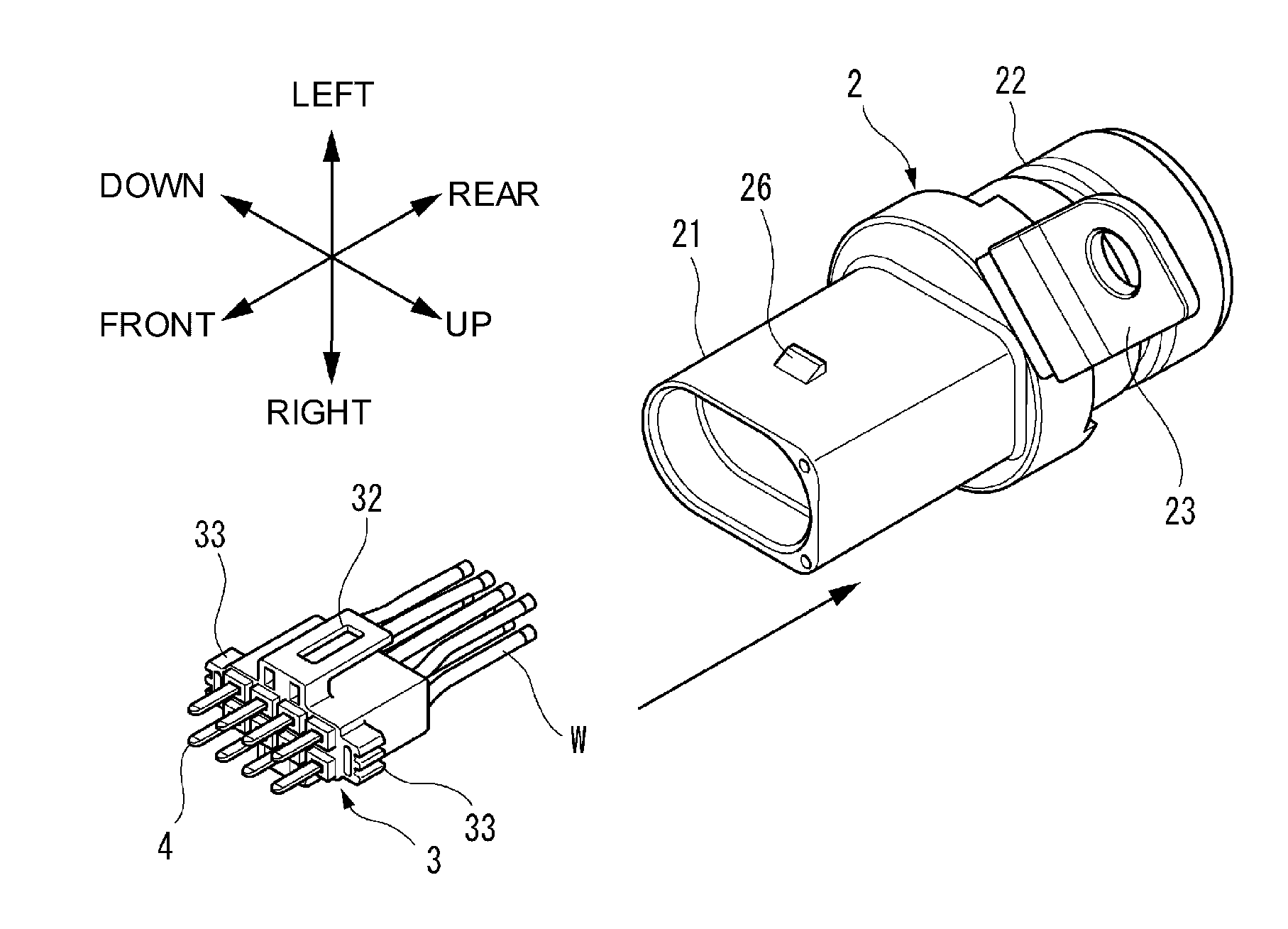Connector and injection method for filler material
- Summary
- Abstract
- Description
- Claims
- Application Information
AI Technical Summary
Benefits of technology
Problems solved by technology
Method used
Image
Examples
Embodiment Construction
(referred to as an “embodiment”, hereinafter) given below is read thoroughly with reference to the accompanying drawings.
BRIEF DESCRIPTION OF THE DRAWINGS
[0033]FIG. 1 is a perspective view showing an external appearance of a connector according to an embodiment of the present invention.
[0034]FIG. 2 is a longitudinal sectional view of a connector of FIG. 1.
[0035]FIG. 3 is a diagram in which a connector of FIG. 1 is viewed from the front side.
[0036]FIG. 4 is a longitudinal sectional view of a connector obtained at a coating step.
[0037]FIG. 5 is a perspective view showing a terminal insertion step of inserting, into an inner plate, terminals to which electric wires are connected by pressure bonding.
[0038]FIG. 6 is a perspective view showing an inner plate insertion step of inserting an inner plate obtained at a terminal insertion step, into a connector housing obtained at a coating step.
[0039]FIG. 7 is a perspective view showing a plug member insertion step of inserting a rubber plug i...
PUM
| Property | Measurement | Unit |
|---|---|---|
| Time | aaaaa | aaaaa |
Abstract
Description
Claims
Application Information
 Login to View More
Login to View More - R&D
- Intellectual Property
- Life Sciences
- Materials
- Tech Scout
- Unparalleled Data Quality
- Higher Quality Content
- 60% Fewer Hallucinations
Browse by: Latest US Patents, China's latest patents, Technical Efficacy Thesaurus, Application Domain, Technology Topic, Popular Technical Reports.
© 2025 PatSnap. All rights reserved.Legal|Privacy policy|Modern Slavery Act Transparency Statement|Sitemap|About US| Contact US: help@patsnap.com



